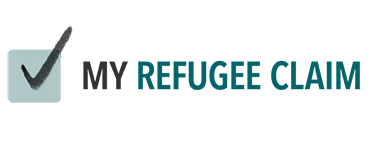Who is a refugee?
The Canadian government says you are a refugee if you are not safe in your own country. If you go back, you may be harmed or lose your freedom because of who you are or what you believe. You must live somewhere else.
Asking for refugee protection in Canada is called making a refugee claim. Even if you were treated badly in your country or it is a dangerous place, you may not be allowed to stay in Canada. You must show that you are a Convention Refugee or a Person in Need of Protection.
Convention Refugee
To be a Convention Refugee, these six sentences must be true for you:
- If I return to my country, I will likely be treated very badly.
- I would be treated badly because of who I am or what I believe.
- I am honestly scared to return.
- I have good reason to be scared to live in my country.
- My government cannot protect me.
- I cannot live safely or properly in any other part of the country.
Person In Need of Protection
To be a Person In Need of Protection, you must show show that 1 or 2 is true:
1. If I return to my country, the people who have power will likely torture me.
OR
2. If I return to my country, I could die or be treated cruelly,
AND
- My government cannot protect me,
- I cannot live safely or properly in any other part of the country,
- I am at risk but not everyone in my country has this risk,
- I am not at risk only because my country wants to punish me for doing something that is a crime in Canada, and
- I am not at risk only because of poor health care in my country.
See Understand the Legal Definitions for more information.
Can I make a refugee claim?
The Canadian government will decide if you can make a refugee claim. It is important to understand who can make a claim. Get legal advice before you ask for refugee protection.
Who is not allowed
You might not be allowed to make a refugee claim in Canada if:
- You are a convention refugee in another country that you can go to.
- You made a refugee claim in United States, United Kingdom, Australia, or New Zealand.
- Canada already told you that you cannot make a claim.
- You made a refugee claim in Canada that did not go ahead for some reason.
- Canada sees you as dangerous or a criminal, or you have abused human rights.
- Canada already made you a protected person.
- Canada has ordered you to leave.
- At a United Staes-Canada land border, you could not enter because of the STCA.
The Safe Third Country Agreement (STCA)
If you enter Canada from the USA, an agreement called the STCA makes it hard to ask for refugee protection. This is true at official border crossings, or for two weeks after entering Canada by water or at any other unofficial place.
You can only make a refugee claim if:
- You have a family member in Canada.
- You are a child under 19, travelling alone, and you do not have a parent or legal guardian in the United States.
- You have a valid Canadian visa, or a study or work permit.
- You are facing the criminal death penalty in the United States or in your country.
- You are stateless.
- You are a citizen of the United States.
A border official will ask you questions to see if you qualify for one of these exceptions. If you cannot, you might have to leave Canada. If possible, speak to a lawyer or legal representative about other ways for you to try to stay in Canada.
Overview of the refugee claim process
To stay in Canada, you must show the government that you are what Canada calls a refugee. You must also show that you are telling the truth. You do this by gathering evidence and by being honest, clear, and detailed about what happened to you.
Start your refugee claim
The first step in making a refugee claim is to let the Canadian government know you want protection. There are two ways to do this. You must be in Canada.
- If you are inside Canada: complete and submit your online application on the IRCC portal, or
- If you are at the border, airport, or detention centre: tell the CBSA officer that you want to make a refugee claim.
CBSA or IRCC decides if you are allowed to make a refugee claim in Canada. If you can, they send your claim to the IRB-RPD.
Your refugee claim hearing
You will have a hearing (a videoconference) about your claim. You must show you are a Convention Refugee or a Person in Need of Protection. If you have status in more than one country, you must show that you are at risk in each one.
At your hearing, a person from the IRB-RPD (a Member) listens to your story and what your witnesses say. They look at your BOC Form, notes from IRCC or CBSA, and anything else that you gave them.
After your refugee claim hearing
After your hearing, the IRB-RPD tells you if your refugee claim is accepted. If it is accepted, you can apply to become a permanent resident. If your claim is rejected, you might be able to appeal (ask for a review). Speak to a lawyer or legal representative to find out about your options.
